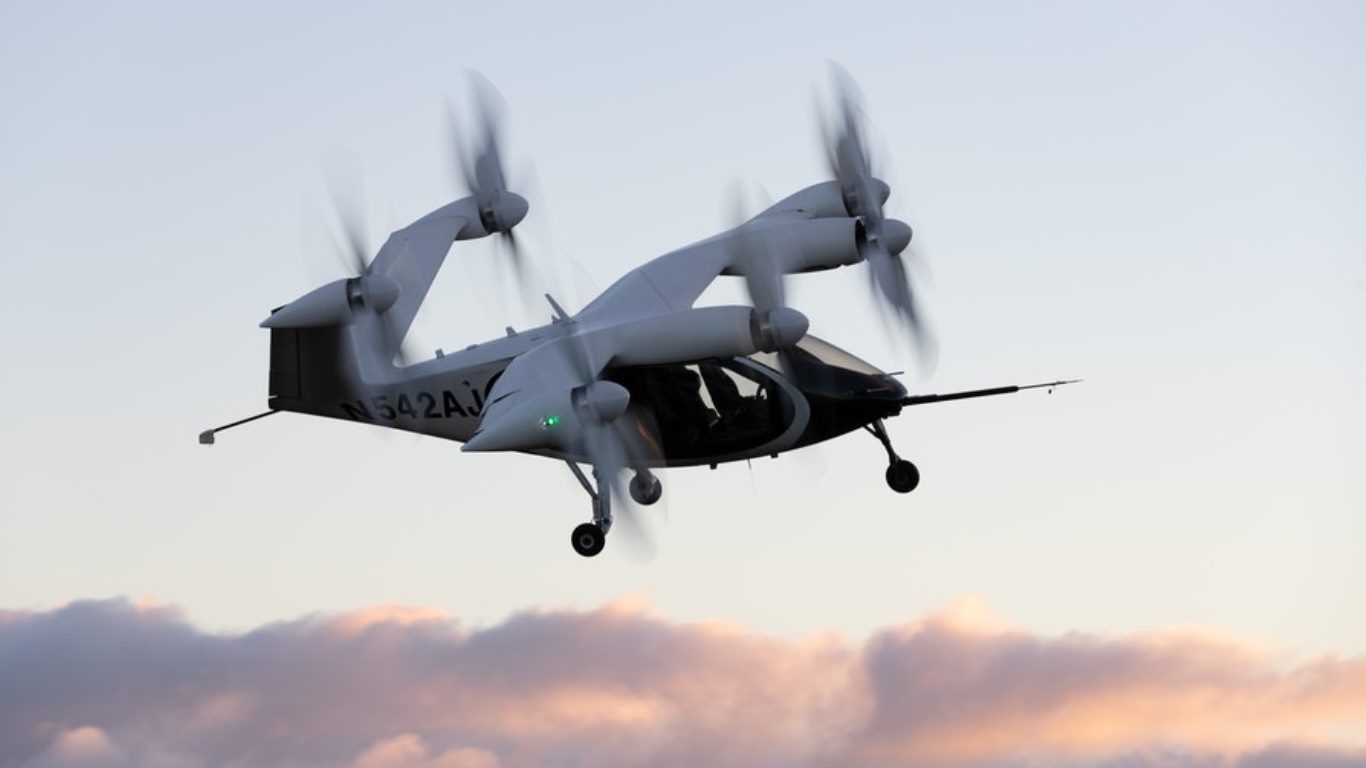Technology
Bank of America Moonshot Investment Strategies: Immortality, Bionic Humans, Electric Airplanes

Published:

Earlier this week, Bank of America’s Global Research group published a list of 14 moonshot technology that the researchers said could change people’s lives and “accelerate the impact of global megatrends.” In our first article on these technologies, we looked at four of BofA’s moonshot technologies: 6G networking, emotional artificial intelligence (AI), brain-computer interfaces and synthetic biology.
In this second article, we take a look at three more BofA moonshots: immortality, bionic people and electric vertical takeoff and landing (eVTOL) vehicles.
[in-text-ad]
At the end of what is perhaps his most famous sonnet, 17th-century poet and clergyman John Donne proclaims, “Death, thou shalt die.” For Donne, immortality was just “one short sleep past [before] we wake eternally.”
Today, immortality also can apply to several technologies that seek to delay conditions associated with premature aging. One such technology is known as genomic instability, a term that describes genetic mutations that can predispose a person to a variety of cancers or inherited diseases. Using proprietary platforms based on CRISPR technology, researchers are developing cancer therapies using genomic alterations to repair DNA damaged by those mutations.
The Nobel Prize in medicine for 2009 was awarded to three U.S. scientists who discovered telomeres, a bit of DNA that protects the ends of chromosomes. Each time a cell divides, a bit of the telomere is lost. Do that enough times and the telomere is gone. That’s telomere attrition: eventually, the cell dies causing tissue damage and aging. Currently, the most common means to treat telomere attrition is to follow a healthy lifestyle. Researchers are also working on a way to “reset” the telomeres that would make cells “functionally younger again.”
Mitochondrial diseases are chronic, genetic and often inherited disorders that are caused by failures of mitochondria to produce enough energy for the body to function. They can affect any part of the body. Another disease or condition can lead to mitochondrial dysfunction that can be passed on again and affect other diseases such as Alzheimer’s, diabetes and cancer. As with telomere attrition, there is currently no cure other than a healthy lifestyle and, in some cases, dietary supplements. Publicly traded Stealth BioTherapeutics is one of many companies working on therapies for several diseases involving mitochondrial dysfunction.
Cellular senescence is a condition in which a cell can no longer divide and proliferate. The condition affects aging and age-related disorders and, ironically, also suppresses some tumor development. Research and development projects span a wide variety of treatments to restore a cell’s regenerative capacity with the goal of preventing or treating a range of age-related diseases. One of Alphabet/Google’s moonshot projects is Calico, which describes its mission as “harness[ing] advanced technologies to increase our understanding of the biology that controls lifespan.”
Bionic treatments may be either invasive (e.g., implants) or non-invasive (exoskeletons). Some of the exoskeletons being developed are being used to augment a person’s capacity for lifting heavy objects. A German company, Sarcos recently demonstrated an exoskeleton that can lift 200 pounds. U.S.-based Ekso Bionics also makes exoskeletons to assist stroke victims and for military use.
[in-text-ad]
BofA’s analysts also mention biohacking, which can mean things like meditation, exercise and eating properly, or it can mean implanting stuff like RFID chips in your hand, becoming your own payment card. BofA called this a sort of “DIY biology.”
While implanting microchips is not illegal, the biohacking subculture of “grinders” are said to believe that there’s a hack for every part of the body and that implanting a chip to enhance that part is a better solution than eating more spinach and less red meat.
In 2018, researchers at Gartner identified DIY biohacking as one of five technologies with the potential to disrupt businesses. What the researchers called biochips are expected to become mainstream in five to 10 years, half the time it will take for level 4 autonomous driving to become ubiquitous.
Electric aircraft capable of vertical takeoffs and landings are coming fast. BofA expects these flying taxis to provide an alternative to automobile taxis, also relieving the pressure on urban streets.
There are two publicly traded companies that are already working on eVTOLs. Blade Air Mobility currently offers helicopter transportation from New York City airports into Manhattan and commuter flights on scheduled, crowdsourced and private aircraft. eVTOLs are definitely in the company’s future — Blade calls them electric vertical aircraft (EVA) — and it expects EVAs to one day be pilotless.
Joby Aviation is currently developing eVTOL aircraft and expects to receive type certification of its first eVTOL in 2023. The aircraft is designed to carry a pilot and four passengers up 150 miles at speeds of up to 200 mph. And it will do that with much less noise than a typical helicopter.
Both Blade and Joby are included in ARK Invest’s Space Exploration and Innovation ETF.
Thank you for reading! Have some feedback for us?
Contact the 24/7 Wall St. editorial team.